The Importance of human Anatomy in Healthcare
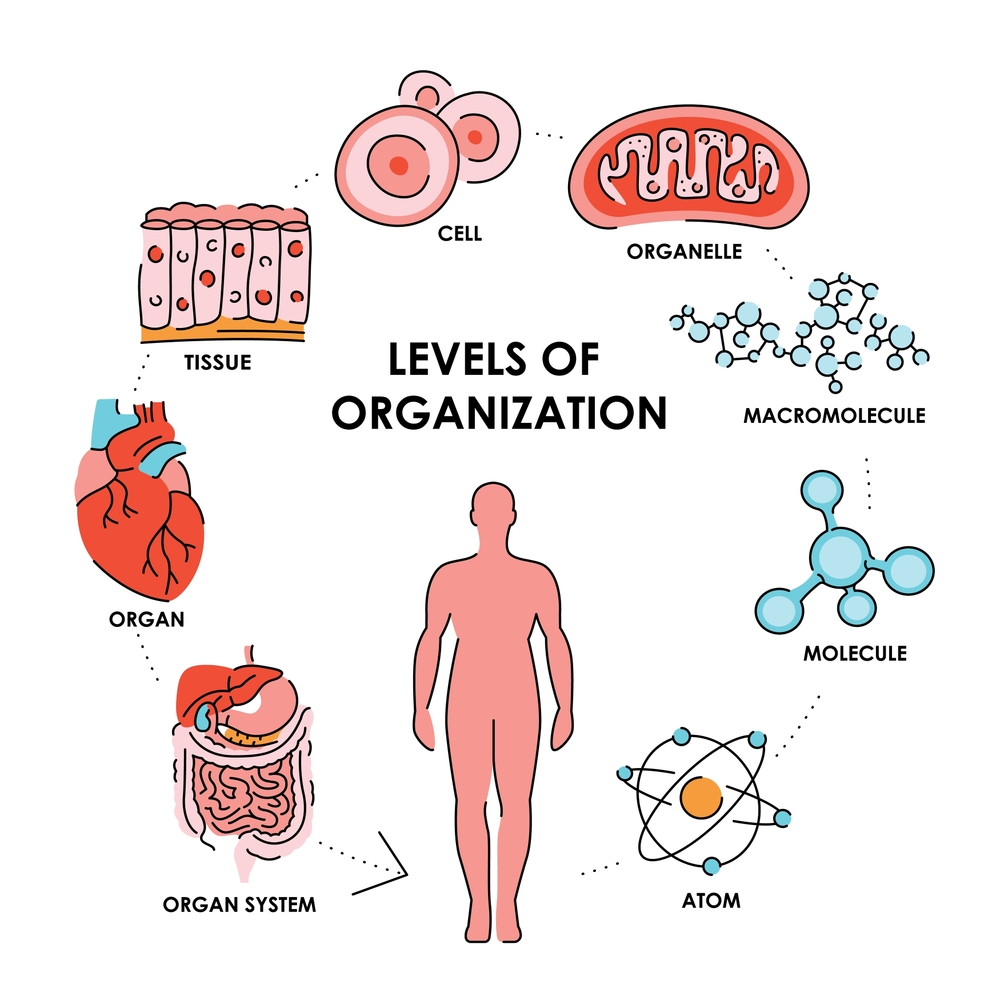
In the world of healthcare, from helping people move better in physiotherapy to managing medical information in coding, knowing about anatomy is super important. Anatomy is like the guidebook that helps healthcare experts understand how our bodies are built and how they work.Hence learning about levels of organization in the human body is important.
Imagine it as a map – a map that shows where everything is inside our bodies. This map is crucial for healthcare. Knowing about anatomy is like having a special lens that lets healthcare experts see and understand the mysteries of the human body.
Whether you’re directly helping patients, studying health records, or contributing to the big picture of healthcare, having a good grasp of anatomy is not just helpful – it’s really, really important.
So, let’s take a journey together and explore the amazing world of anatomy. It’s like an adventure where we discover how our bodies are put together and how they work. Whether you’re a physiotherapist wanting to improve how you help people, a medical coder figuring out the details of health records, or someone just starting to learn about healthcare, let’s make anatomy your helpful guide on this exciting journey. We’ll explore the landscapes of the human body together in a way that’s easy to understand for everyone. Get ready for a fascinating trip!
1. Chemical Level:
At the foundation of the human body lies the chemical level. This encompasses atoms, the smallest units of matter, combining to form molecules. These molecules, such as proteins, lipids, and carbohydrates, serve as the building blocks for the subsequent levels.
2. Cellular Level of organisation:
Moving up the hierarchy, we arrive at the cellular level. Cells are the basic structural and functional units of the body. Different types of cells, from muscle cells to nerve cells, collaborate to ensure the proper functioning of tissues and organs.
3. Tissue Level of organisation:
Cells join to create tissues. Tissues are groups of similar cells working together to perform specific functions. There are four primary types of tissues in the human body: epithelial, connective, muscle, and nervous.
4. Organ Level:
Organs are formed when various tissues come together to accomplish a specific task. Examples include the heart, lungs, liver, and brain. Organs collaborate within organ systems to maintain homeostasis, the body’s internal balance.
5. Organ System Level of organisation:
Organ systems represent the next level, where multiple organs work in harmony to carry out broader functions. Examples of organ systems include the cardiovascular system, respiratory system, and nervous system.
6. Organism Level:
Finally, at the highest level, we have the complete organism. All the organ systems collaborate to form a living, functioning being – the human body.
Understanding these levels of organization lays a solid foundation for delving into the complexities of anatomy. As you embark on your journey to explore the wonders of the human body, remember that each level is connected, contributing to the overall harmony of our physiological existence.
Levels Of Organization In The Human Body
Cellular Level: The Foundation of Life’s Complexity
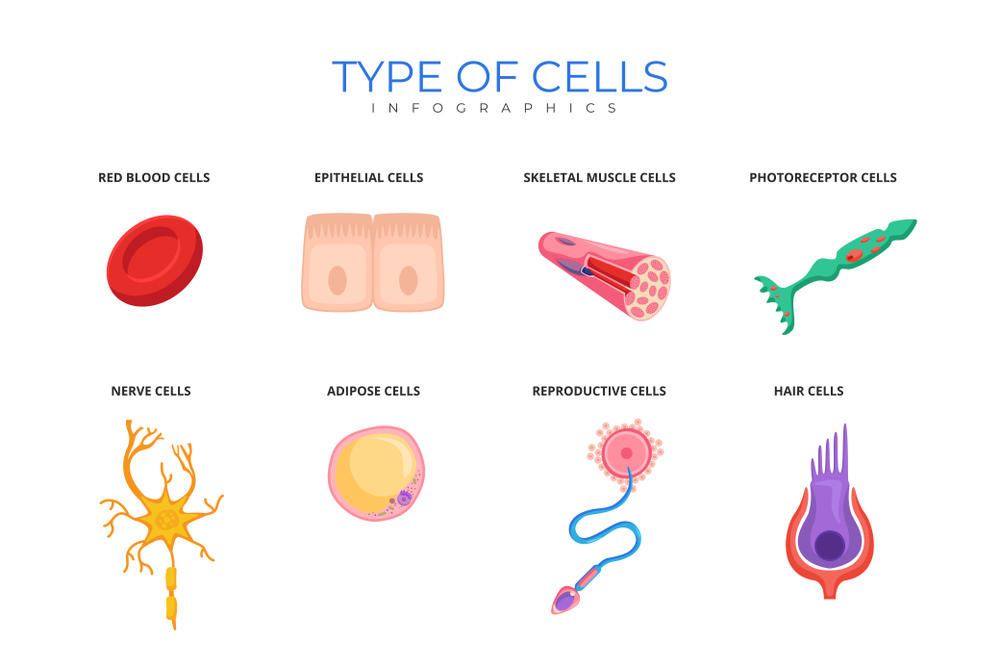
Cells are the smallest living units in the human body, and they are often referred to as the building blocks of life. The cell theory, a fundamental concept in biology, states that all living organisms are composed of cells, cells are the basic units of structure and function, and all cells come from pre-existing cells through cell division.
Cell Structure and function

Cell Membrane: The outer boundary of a cell is the cell membrane, a selectively permeable barrier that regulates the passage of substances in and out of the cell.
Cytoplasm: Inside the cell membrane is the cytoplasm, a gel-like substance where organelles and cellular structures are suspended.
Nucleus: The control center of the cell, the nucleus contains genetic material (DNA) and directs cellular activities.
Types of Cells
Muscle Cells: These specialized cells contract and generate force, enabling movement. Skeletal muscle cells move bones, while smooth muscle cells are found in organs and assist in involuntary movements.
Nerve Cells (Neurons): Nerve cells are responsible for transmitting signals. They have long extensions called axons and dendrites that facilitate communication between cells.
Epithelial Cells: Forming protective layers, epithelial cells cover surfaces and line cavities, serving as barriers against pathogens and providing selective permeability.
Connective Tissue Cells: Fibroblasts, for example, produce the extracellular matrix in connective tissues, contributing to structural support.
Cellular Functions
Metabolism: Cells carry out metabolic processes, including anabolism (building molecules) and catabolism (breaking down molecules) to produce and utilize energy.
Energy Production: Mitochondria, known as the powerhouse of the cell, generate adenosine triphosphate (ATP), the cell’s primary energy currency.
Protein Synthesis: Ribosomes, either free in the cytoplasm or attached to the endoplasmic reticulum, synthesize proteins based on genetic instructions.
Cellular Communication and Coordination
Cell Signaling: Cells communicate through signaling pathways, allowing them to respond to changes in their environment or signals from other cells.
Cell Division: Cells replicate through cell division, ensuring the growth, repair, and maintenance of tissues. This process involves mitosis for somatic cells and meiosis for reproductive cells.
Understanding the cellular level is pivotal because it forms the basis for comprehending the complex functions and interactions that occur in tissues, organs, and organ systems. Each cell type contributes uniquely to the harmonious functioning of the human body, making it a fascinating and intricate world at the microscopic level.
Tissue Level: Harmony in Diversity
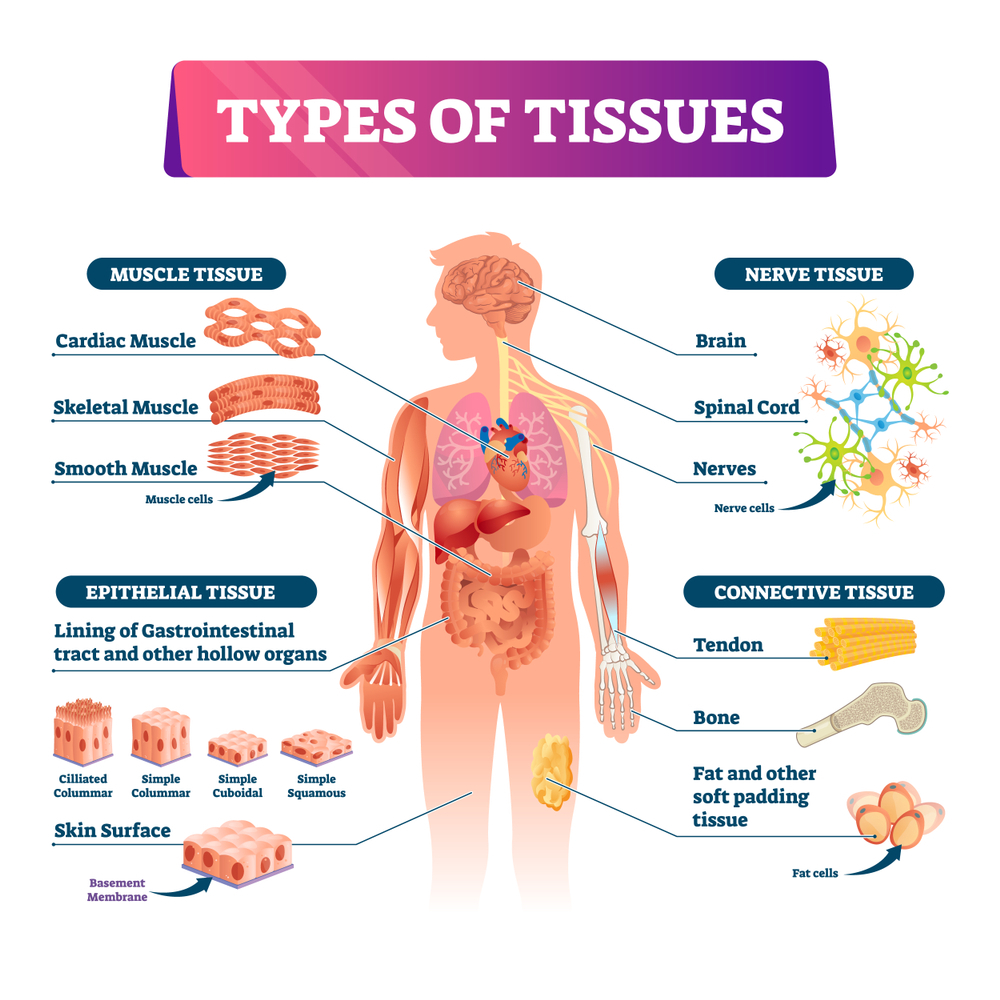
Tissues are the next level of organization in the human body, where cells with similar structures and functions unite to perform specific tasks.The combination of different cell types within a tissue allows for specialized functions that contribute to the overall health and functioning of organs.
Types of Tissues
Epithelial Tissue:
Structure: Composed of closely packed cells with little extracellular material.
Functions: Forms protective barriers, lines cavities and surfaces, and facilitates selective permeability.
Locations: Skin (epidermis), lining of the digestive tract, respiratory and reproductive systems.
Connective Tissue:
Structure: Contains cells dispersed in an extracellular matrix (e.g., collagen, elastic fibers).
Functions: Provides structural support, connects and anchors tissues, and facilitates nutrient and waste transport.
Examples: Bone, cartilage, blood, adipose tissue.
Muscle Tissue:
Structure: Composed of muscle cells (muscle fibers) that contract when stimulated.
Functions: Enables movement, maintains posture, generates heat.
Types: Skeletal (voluntary), smooth (involuntary), cardiac (involuntary, found in the heart).
Nervous Tissue:
Structure: Consists of neurons (nerve cells) and glial cells.
Functions: Transmits electrical impulses, processes and stores information, coordinates body activities.
Locations: Brain, spinal cord, nerves.
Characteristics of Tissues
Cell-Extracellular Matrix Relationship: The composition and arrangement of cells and the extracellular matrix determine the properties of each tissue type.
Vascularity: Connective tissues are usually well-vascularized, while epithelial tissues are avascular (rely on diffusion).
Regeneration Capacity: Epithelial tissues have high regenerative capacities, whereas nervous tissues have limited regenerative abilities.
Tissue Interactions
Organ Formation: Tissues collaborate to form organs, combining their specialized functions to contribute to the overall function of the organ.
Homeostasis: Tissues work in concert to maintain a stable internal environment, contributing to the body’s ability to achieve and sustain homeostasis.
Clinical Significance
Tissue Pathology: Understanding tissues is crucial in diagnosing and treating diseases. For example, abnormal growth or function of tissues can lead to various health conditions.
Regenerative Medicine: Knowledge of tissue types and their regenerative capacities is essential in the field of regenerative medicine and tissue engineering.
In summary, the tissue level represents a beautiful collaboration of cells, each contributing its unique abilities to create structures with specialized functions. The diversity of tissues is essential for the body’s complex functions, making the study of tissues a critical aspect of understanding human anatomy and physiology.
Organ Level: Symphony of Specialization
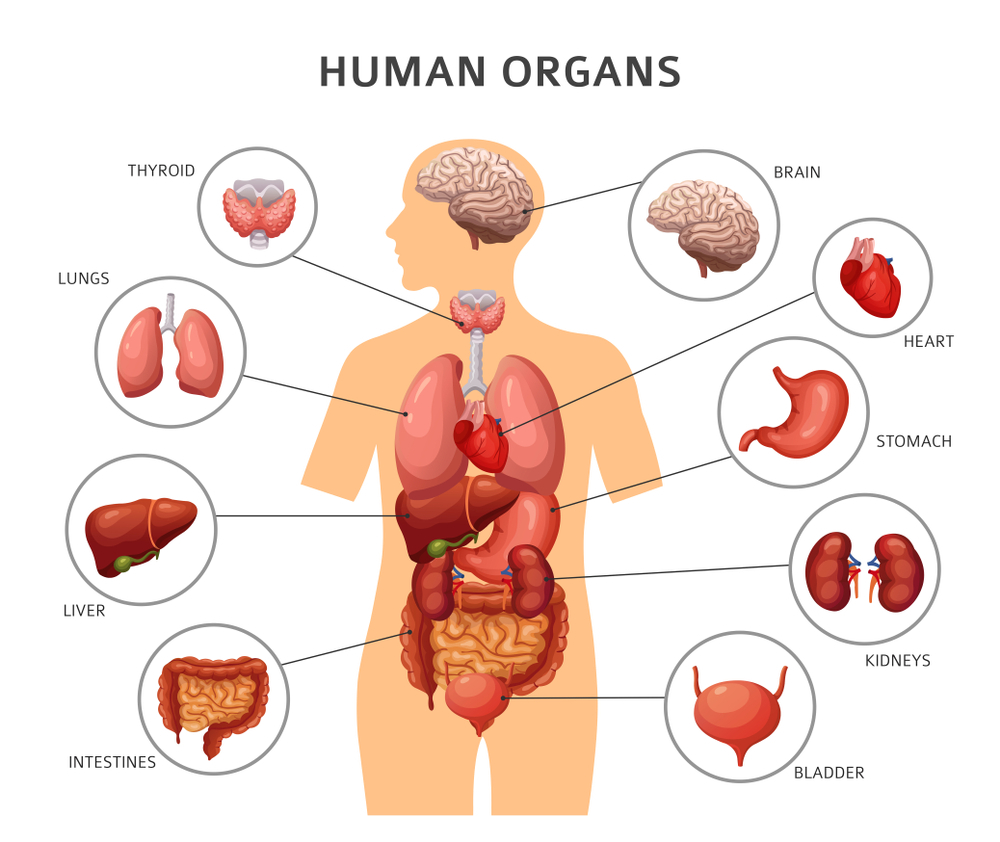
Organs are the next tier of organization, where different tissues unite to perform specific functions and create structures with distinct purposes.The collaborative efforts of tissues within an organ result in the emergence of specialized structures vital for the body’s overall function.
Formation of Organs
Tissue Integration: Various tissues collaborate and organize into complex structures, giving rise to organs.
Functional Synergy: Each tissue within an organ contributes its unique functions to ensure the organ’s effective performance.
Examples: Heart, lungs, liver, brain – each exemplifies the intricate collaboration of tissues to fulfill specific roles.
Key Organs and their Functions
Heart:
Tissues Involved: Cardiac muscle, connective tissue, epithelial tissue.
Functions: Pumps blood throughout the body, ensuring oxygen and nutrient delivery.
Lungs:
Tissues Involved: Epithelial tissue, connective tissue, smooth muscle.
Functions: Facilitates gas exchange, allowing oxygen to enter the bloodstream and carbon dioxide to exit.
Liver:
Tissues Involved: Hepatic tissue, connective tissue.
Functions: Detoxification, synthesis of proteins, storage of glycogen, and secretion of bile.
Brain:
Tissues Involved: Nervous tissue (neurons and glial cells), connective tissue.
Functions: Coordinates body activities, processes sensory information, regulates homeostasis.
Interconnected Functions
Crosstalk Between Organs: Organs communicate and influence each other’s functions. For example, the heart and lungs collaborate to circulate oxygenated blood.
Feedback Mechanisms: Organs often participate in feedback loops, where the output of one organ system regulates the input of another, contributing to stability.
Clinical Significance
Disease Manifestation: Organ-level dysfunction can manifest as diseases. Understanding organ structure and function is crucial for diagnosing and treating medical conditions.
Treatment Approaches: Medical interventions often target specific organs or organ systems to restore health and function.
In essence, the organ level represents a higher level of complexity, where tissues synergize to form structures with specialized functions. The collaboration of organs within systems showcases the remarkable interconnectedness that sustains life, emphasizing the importance of studying organs to comprehend the intricacies of the human body.
Organ System Level: Choreography of Life’s Functions
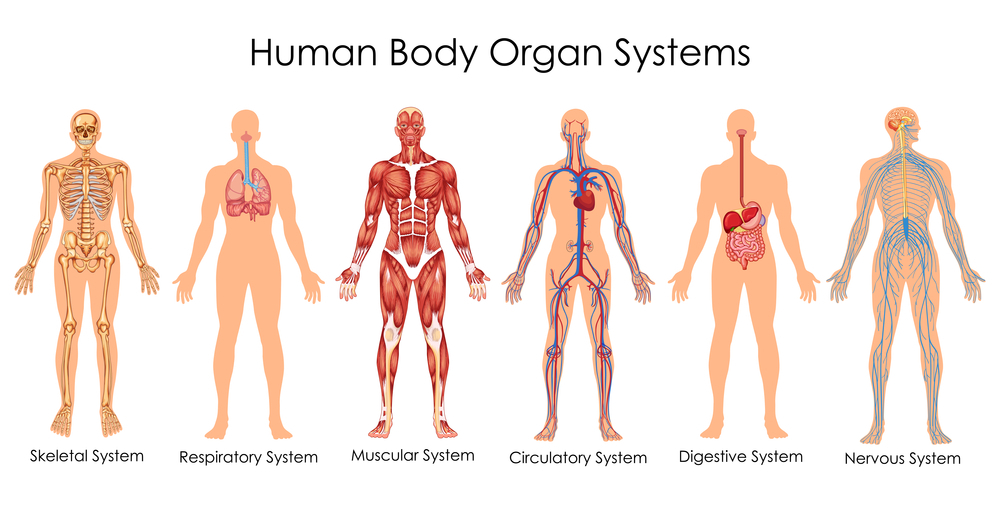
Organ systems are the pinnacle of biological organization, where organs with related functions unite to perform complex tasks. The integration of organs within systems allows for specialization and efficiency in meeting the diverse needs of the body.
Multiple Organs, One Goal:
Organ systems are groups of organs working together to achieve specific physiological functions. Organs within a system collaborate, each contributing its unique capabilities to fulfill a broader function.
Key Organ Systems and Their Functions:
Cardiovascular System:
Organs Involved: Heart, blood vessels.
Functions: Circulates blood to deliver oxygen, nutrients, and hormones to cells and remove waste products.
Respiratory System:
Organs Involved: Lungs, airways.
Functions: Facilitates the exchange of oxygen and carbon dioxide between the blood and the air.
Nervous System:
Organs Involved: Brain, spinal cord, nerves.
Functions: Coordinates body activities, receives and interprets sensory information, regulates responses to stimuli.
Digestive System:
Organs Involved: Stomach, liver, intestines.
Functions: Breaks down and absorbs nutrients from food, eliminates waste.
Muscular System:
Organs Involved: Skeletal muscles.
Functions: Enables movement, provides support and protection.
Skeletal System:
Organs Involved: Bones, joints.
Functions: Provides structural support, protects internal organs, facilitates movement.
Integration and Communication:
Feedback Mechanisms: Organ systems communicate through feedback loops to maintain homeostasis. For example, the endocrine system regulates various physiological processes.
Endocrine System: Works in tandem with other systems by releasing hormones that influence target organs and tissues.
Adaptation and Response:
Adaptive Capacity: Organ systems can adapt to changes in internal and external environments, ensuring the body’s survival in diverse conditions.
Coordination in Stress: For instance, the nervous and endocrine systems collaborate in the “fight or flight” response to stress.
Clinical Considerations:
Disease Impact: Dysfunction in one organ system often affects others. For example, cardiovascular diseases may impact the respiratory system.
Treatment Approaches: Medical interventions often target specific organ systems, considering their interconnected functions.
Holistic View of Health:
Interdependence: The health of the whole organism relies on the harmonious function of its organ systems.
Holistic healthcare approaches consider the interplay of organ systems in promoting overall well-being.
Understanding the organ system level provides a comprehensive view of the intricate dance of organs, each playing a crucial role in maintaining the delicate balance required for the body’s optimal functioning. It’s a testament to the remarkable organization and coordination that sustains life.
Organism Level: The Symphony of Life
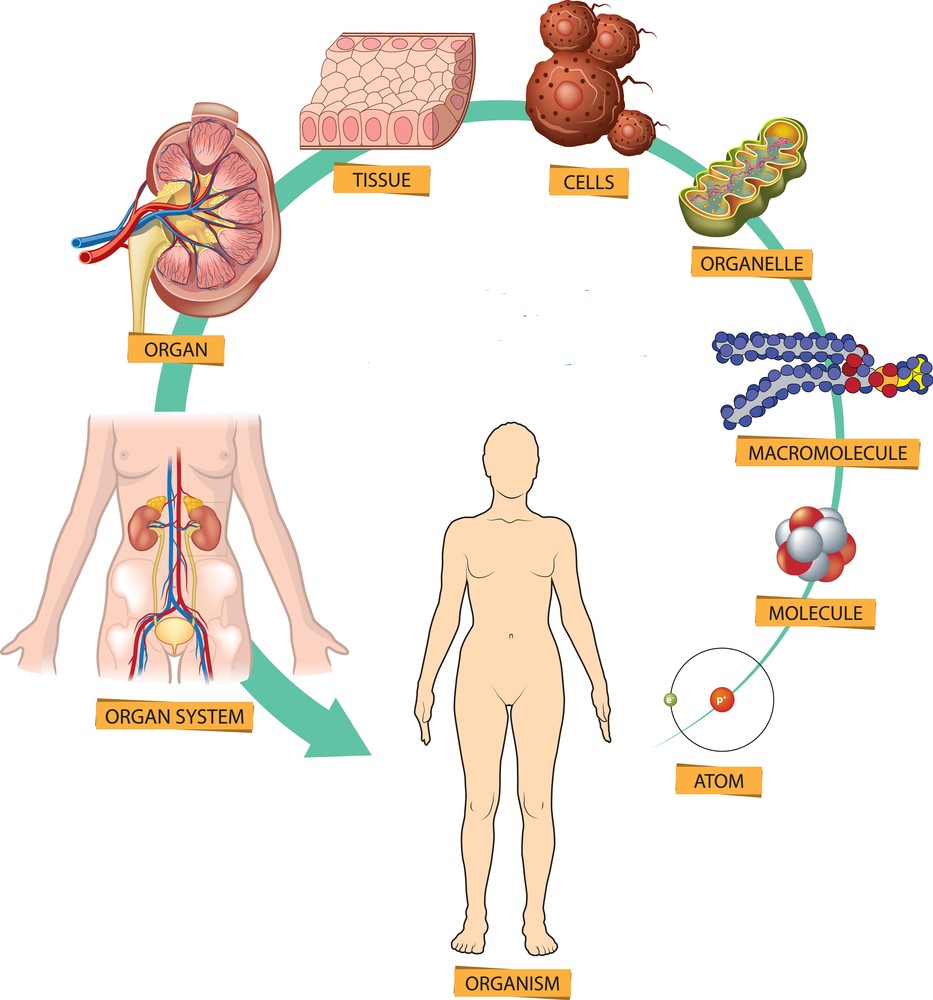
The organism level is the zenith of biological organization, representing the complete, living being formed by the collaboration of all organ systems.At this level, the intricacies of each organ system harmonize to sustain life as a unified, functioning organism.
Unity in Diversity: The organism level encompasses the entire individual, where every level of organization, from cells to organ systems, contributes to the entity’s existence.
Integration of Systems: All organ systems work collaboratively, with each playing a vital role in maintaining the physiological and biochemical balance required for life.
Functions at the Organism Level:
Homeostasis: The primary function at this level is to maintain homeostasis, the dynamic equilibrium that ensures the internal environment remains stable despite external changes.
Adaptation: The organism can adapt to various conditions, responding to internal and external stimuli to survive and thrive.
Growth and Development: From birth to maturity, organisms undergo growth and development, driven by intricate biological processes.
Sensory Perception: Organisms possess sensory organs that enable them to perceive and respond to the surrounding environment.
Reproduction: One of the defining characteristics of organisms is their ability to reproduce, ensuring the continuity of life.
Understanding the organism level provides a holistic perspective on life, emphasizing the intricate interplay of biological, psychological, and social dimensions that define the existence of living beings. It’s a testament to the remarkable complexity and adaptability inherent in the fabric of life.
Conclusion
In conclusion, the exploration of the levels of organization in the human body unveils a captivating journey through the intricacies of anatomy. The study of anatomy not only enhances professional expertise but also fosters a holistic appreciation for the complexity and adaptability inherent in the fabric of life. Together, let’s continue to explore, learn, and marvel at the wonders of the human body. We will cover each of these levels in detail in the upcoming blogs. If you want to know what medical coders do? ,you can read it here.


